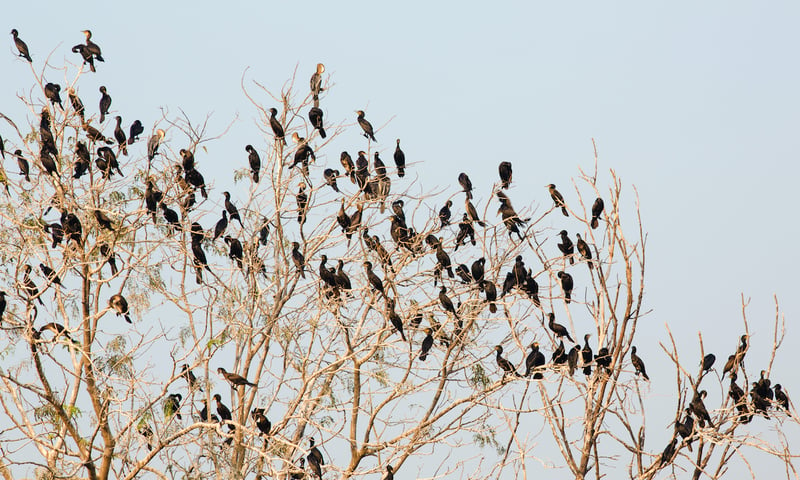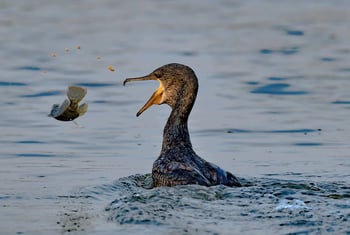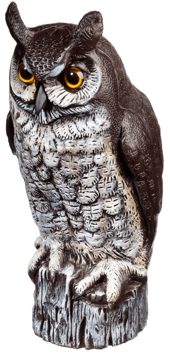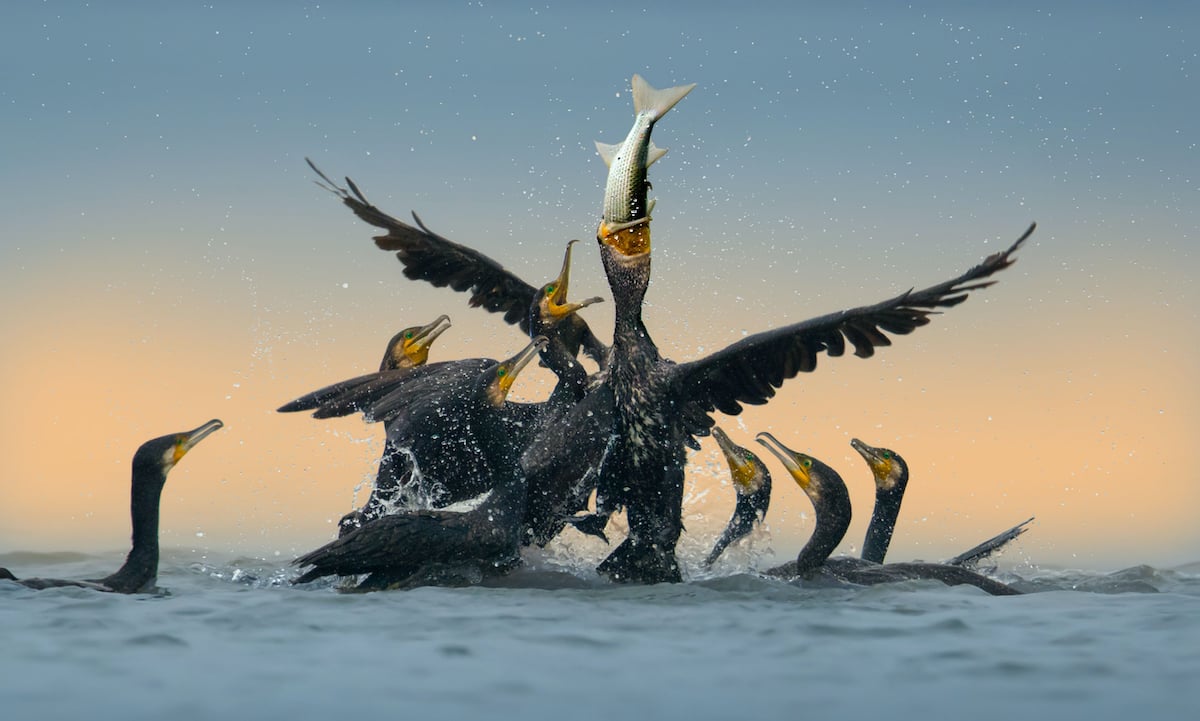Learn how you can protect your fishery from this protected species by adding artificial habitat throughout your pond or lake.
The Problem with Cormorants
Protecting your forage population and young juvenile predators from Cormorant predation becomes a lake management priority during the winter months. Flock numbers can range from a few individuals to hundreds of wintering birds that can absolutely devastate a forage base, reducing their availability to your game fish stocks once the growing season begins.
Environmental Factors from Roosting Cormorants
Roosting flocks of Cormorants can also lead to other environmental factors, including localized dead zones within the pond, tree death due to soil acidization from flock excrement, and shoreline cover degradation from nesting and perching activity.
This loss of shoreline cover can then lead to secondary implications such as erosion of pond banks and turbidity issues.

When to Look for Cormorants in Texas and Oklahoma
Cormorants usually begin showing up in many parts of Texas and Oklahoma around late fall, early winter. Foraging primarily in water 15’ and under, this means that most ponds and small lakes are ideal spots for these birds to utilize.
Cormorant Diet
Adult Cormorants are capable of consuming up to 1 lb. of fish per day. When you start to add up the number of days these birds are present in your fishery, then multiply how many there are within the flock, it becomes apparent very quickly just how big of an issue these predators pose to your hard work and investment.
Here’s the real kick in the teeth; yes, these birds are most successful in capturing your forage species and smaller predators, but that doesn’t mean that they won’t try and snag a 1-3 lbs. Bass for dinner either.
These larger fish can usually escape capture, but there is often damage to your game fish from the interaction.
Pond King fisheries biologists have been on many surveys in the spring and collected Bass with either open wounds or healed scars from previous Cormorant altercations. Cormorants' eyes are definitely bigger than their stomachs. The size of fish they will try to capture would most definitely surprise you.
How Cormorants Hunt

Cormorants don’t dive from the air to capture their prey but instead swim down their prey with their webbed feet. This is where it becomes important to have habitat and cover to equip your fisheries community better to evade these predators in all portions of the water column.
Ample Submerged Vegetation is Crucial
During the early parts of the seasonal residence, some aquatic vegetation is still present and provides your fish with some protection. However, as the seasons move on into winter, this vegetation will completely die off and leave the shallow portions of your pond devoid of cover.
Shallow brush piles, laydowns, or artificial structures like the Honey Hole Grass are excellent habitat options to provide cover for newly hatched fry from natural pond interactions between fish species and remain available during the winter months.
Stave off Avian Predation with Artificial Habitat

As water temperatures continue to drop during the winter, forage fish begin to school up, both to conserve energy and also for better predator evasion, that is until the Cormorants arrive. Cormorants will hunt and feed as a flock to better corral and capture prey.
Open Water Cover Deters Cormorant Feeding
This spells disaster for your forage species, as this collects a greater density of fish into a smaller area for the birds to pick off. Having habitat out in open water portions of your fishery will provide fish attractors during the growing season and complex cover that the fish can utilize to evade the Cormorant flocks more effectively.
Protecting Your Fish from a Protected Species

While ensuring there is adequate cover to help your fish stave off avian predation beneath the surface of the water is the best way to protect your fishery, there are also a couple of tactics that you can employ to limit the number of Cormorants that frequent your pond or lake.
Try Scare Tactics to Deter Cormorant Roosting
Depending on your location, air or propane cannons can be installed to go off at various intervals to startle and scare the birds away. These devices are designed to mimic gunshots to run the birds off without harm.
There are also predator decoys that can be installed, such as floating fake Alligator heads or Great Horned Owl decoys.
Installing these devices so that the wind will provide some natural movement will go a long way in making these installments look more realistic and help deter unwanted guests.
Because Cormorants are a protected species, frequent visits to your pond and non-lethal harassment are the final options in limiting the time Cormorants spend enjoying the fruits of your labor.
Hard Cover is the Best Option to Deter Cormorant Predation
As you can see, hard structural cover, whether natural or artificial, is important to the interactions between your game fish and forage species and your fishery in general.
To properly protect your fish from these avian predators, there needs to be complex habitat available even in the depths of winter.
Ensuring that this habitat is adequately distributed in both the shallow and deep-water portions of your pond will help to ensure you are not restocking baitfish year after year due to Cormorant loss.
Protect Your Fish from Cormorant Predation Video
Contact Pond King for Professional Pond Management
If you have any other questions on choosing the right habitat to protect your fishery or how to limit the effects of Cormorants on your pond, feel free to give our team a call or contact us for pond management support.
See y’all down at the pond!



